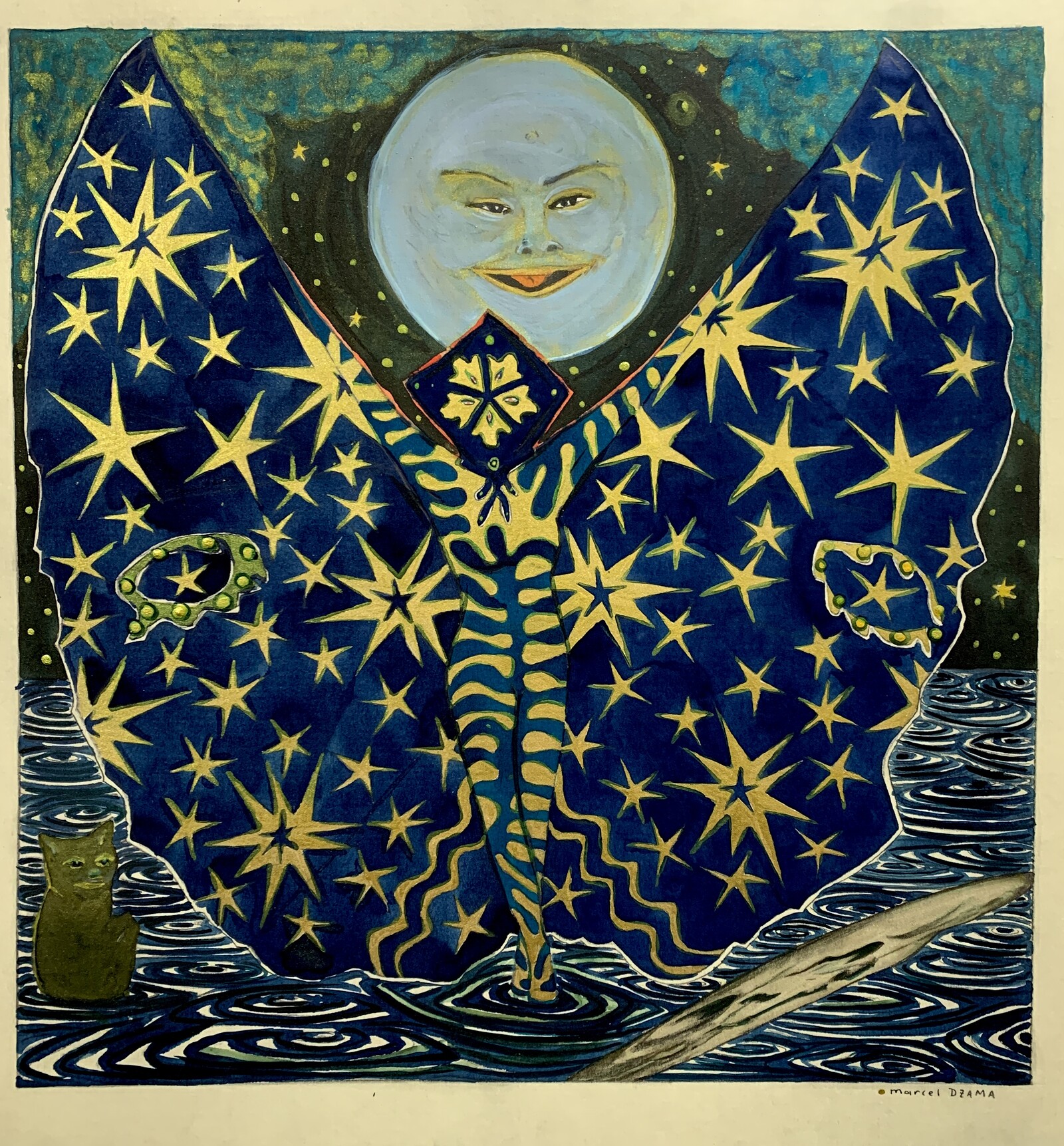Wild Kindness
March 21–May 11, 2024
Jos Smolderenstraat 50
2000 Antwerp
Belgium
Tim Van Laere Gallery is pleased to present its second solo show of Marcel Dzama entitled Wild Kindness. The exhibition will present a new series of drawings along with sculptures, dioramas, costumes and the film To Live on the Moon (For Lorca). On the opening night of the exhibition Marcel Dzama will pair the screening of the film with a live performance.
The title of the show refers to The Wild Kindness song by the Silver Jews, a poetic and introspective song that explores themes of individuality, rebellion, and finding purpose in a world that often feels suffocating or restrictive. These themes also run like a thread throughout the works by Marcel Dzama. Drawing equally from folk vernacular as from art-historical and contemporary influences, Dzama’s work visualises a universe of childhood fantasies and otherworldly fairy tales. His work is replete with dancers and masked figures, anthropomorphised animals and monsters, human-plant hybrids and grinning moons. Dzama’s image repertoire includes a wide range of art-historical quotations like the ballet costumes by Oskar Schlemmer or the 1940s kitsch-inspired portraits of Francis Picabia, for example, and direct references to Francisco de Goya, Marcel Duchamp and Joseph Beuys.
In his latest drawings Dzama explores tropical, oceanic and celestial imagery, which he combines with his reccurring themes and motives. In the larger drawing A Song for Nature’s Queen we can see a female figure serenading her surroundings of waist-high water. The water level raised even more in the large triptych Blue Water Blues, where the figures are completely submerged underwater among fish, octopuses and eels. They appear like scenes from a surreal aquatic ballet. At the same time, like an ominous but beautiful visual allegory, their never-ending waterlines seem to portend the continued degradation and collapse of the natural world. The works balances between showcasing the beauty and celebration of life with the constant threat of its decay and our downfall. It reminds us of John Milton’s epic poem Paradise Lost, the writings of William Blake and Dante and the sixteenth-century Augsburg Wunderzeichenbuch (book of miracles). “It’s like a game of chess we play with Mother Nature” says the artist. More than just a metaphor for the artist, chess is a longtime interest for Dzama, which has figured into works throughout his career. In the exhibition there are a lot of chess references to be found, including the life-sized chess pieces and the smaller porcelain dioramas.
The film To Live on the Moon (For Lorca) is loosely based on Federico Garcia Lorca’s screenplay, Trip to the Moon (1929), a paradigm of Surrealism, comparable to the cinematic experiments of Lorca’s friends and peers Salvador Dalí and Luis Buñuel. In To Live on the Moon (For Lorca), Dzama combines live musical performance and dance with a newly commissioned film that explores the imagery of the original Trip to the Moon to tell the story not only of Lorca’s death, but of his resurrection as the Moon itself. Using the vignette structure, Dzama follows Lorca from life to death and on to the cosmos, narrating his tale of resurrection and artistic expression through the songs and poems all written by the artist, in English and Spanish.
Marcel Dzama (b. 1974 Winnipeg, Canada. Lives and works in New York) has exhibited globally and work by the artist is held in museum collections worldwide, including The Museum of Modern Art, New York; Centre Georges Pompidou, Paris; Museum of Contemporary Art, Los Angeles; National Gallery of Canada, Ottawa; Solomon R. Guggenheim Museum, New York; and Tate Gallery, London.



